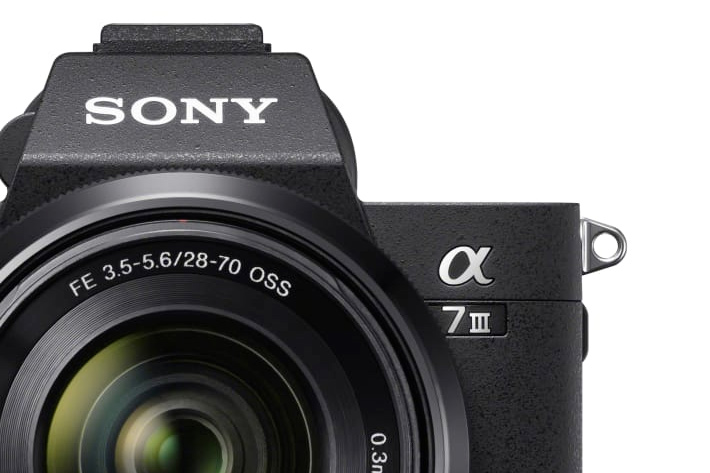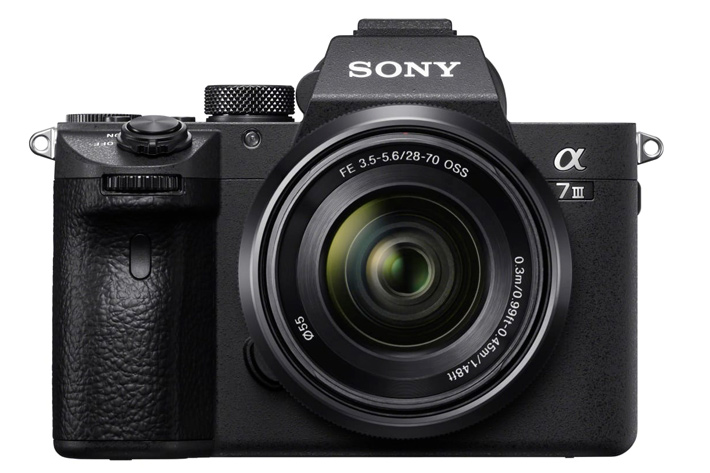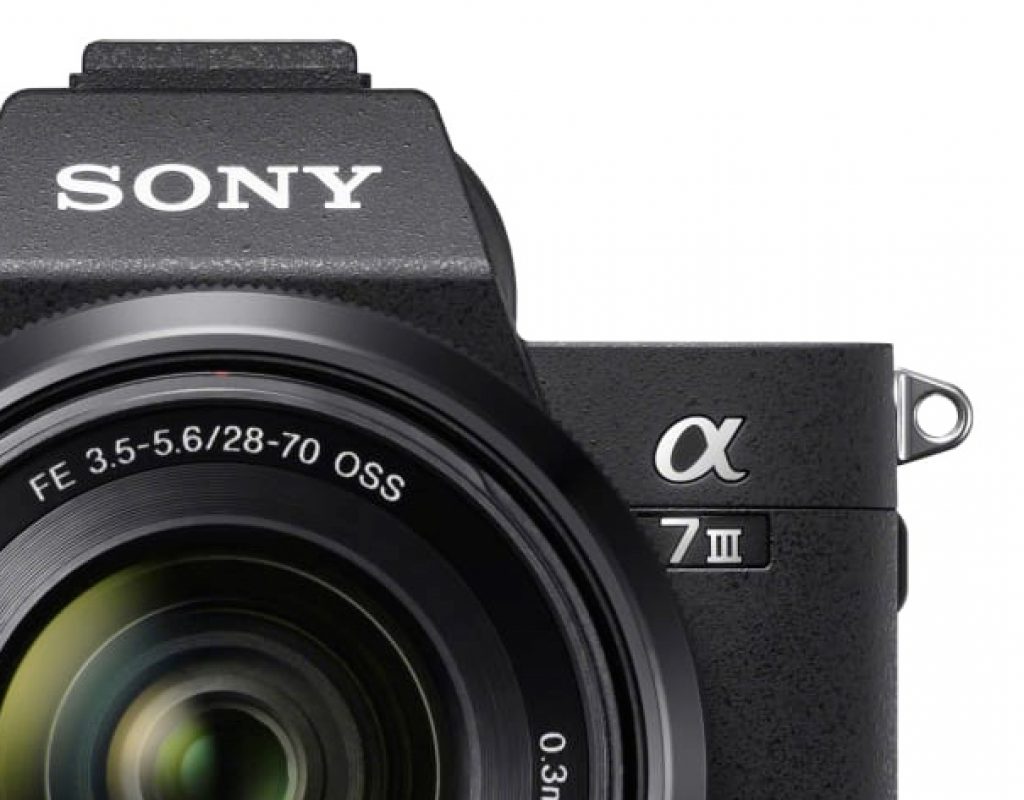
High Resolution 4K movie shooting with full pixel readout and no pixel binning across full-width of full-frame sensor, 10 fps silent shooting and a brand new 24.2MP sensor are some of the features of the new Sony a7 III.
Priced at $1999 and available April 2018, the Sony a7 III, is the newest addition to the full-frame mirrorless line-up from Sony. It’s what can be considered a basic or entry level model for full-frame, but some of the features it offers, picked from the a9 and the a7R III, are not basic, making this a camera that may attract more people to Sony. Photographers and videographers will find in this model good reasons to check the camera, if they are after full-frame and want a Sony.
https://youtu.be/M4obW6FfTt0
Video is an essential part of Sony’s cameras, and the α7 III follows the same logic. It offers 4K UHD (3840×2160) video recording across the full width of the full-frame image sensor. According to Sony, “in video mode, the camera uses full pixel readout without pixel binning to collect about 2.4x (24p recording, and approx. 1.6x at 30p) the amount of data required for 4K movies, and then oversamples it to produce high quality 4K footage with exceptional detail and depth.”
The camera offers an HLG (Hybrid Log-Gamma) picture profile, which supports an Instant HDR workflow, allowing HDR (HLG) compatible TV’s to playback true-to-life 4K HDR imagery. Further, both S-Log2 and S-Log3 are available for increased colour grading flexibility, as well as Zebra functionality, Gamma Display assist and proxy recording. The camera can also record Full HD at 120 fps at up to 100 Mbps, allowing footage to be reviewed and eventually edited into 4x or 5x slow motion video files in Full HD resolution with AF tracking.
For movie recording, the camera offers improved Fast Hybrid AF. Fast Hybrid AF with focal-plane phase-detection AF and contrast-detection AF locks onto and smoothly tracks moving subjects. A wide AF area like that for still images is now available for movies, too. Reduced low-end AF drive speed allows more pronounced slow focus effects. Freedom to match focus response to specific scenes is enhanced overall.
https://youtu.be/aCr2lfMoMPY
Auto focus performance has been improved over the a7 II, with the addition of features as 4D FOCUS. The new camera has 425 contrast AF points that work with a 693-point focal-plane phase-detection AF system inherited from the α9 model. The AF system, derived from the a9, covers approximately 93% of the frame, ensuring reliable focusing and tracking for even the most difficult to capture subjects.
AF response and tracking has also been greatly improved in the new camera, with, according to Sony’s own tests, almost 2x the focusing speed in low-light condition and 2x the tracking speed compared to the previous model as a result of the faster image sensor readout. This allows, adds the company, “complex and unpredictable motion to be captured with far greater precision and accuracy.”
The Eye AF feature is also available in the new camera, even in AF-C mode, which is extremely useful for situations where the subject is turning around, looking down or otherwise obstructed. It also works when the α7 III is being used with Sony’s A-mount lenses with an optional LA-EA3 adaptor. Additional improvements in focusing flexibility include the addition of a multi-selector or ‘joystick’ for moving focusing points quickly, like the a7R III, the addition of touch focusing capability, AF availability in Focus Magnifier mode, an ‘AF On’ button and much more.
https://youtu.be/E9YaPx2heWw
The Sony a7 III receives a newly developed image sensor, the 24.2MP back-illuminated Exmor R CMOS, which is paired with a front-end LSI that effectively doubles the readout speed of the image sensor, as well as an updated BIONZ X processing-engine that boosts processing speed by approximately 1.8 times compared to the α7 II. These components work together to allow the camera to shoot at faster speeds while also enabling a ISO range of 100 – 51200 (expandable to ISO 50 – 204800 for still images) and an overall 1.5-stop improvement in image quality. The camera also features, adds Sony, “15-stop dynamic range at low sensitivity settings, ensuring outstanding overall performance at all settings and in all shooting conditions, with significant advancements in accurate colour reproductions of skin tones and the vibrant colours of nature.”
The updated image processing system present allows the camera to shoot full resolution images at up to 10 fps with continuous, accurate AF/AE tracking for up to 177 Standard JPEG images, 89 compressed RAW images or 40 uncompressed RAW images. This high speed mode is available with either a mechanical shutter or a completely silent shooting, adding to the flexibility of the camera. The camera can also shoot continuously at up to 8 fps in live view mode with minimal lag in the viewfinder or LCD screen.
There is more, though: for added convenience, while large groups of burst images are being written to the memory card, many of the cameras key functions are operable, including access to the ‘Fn’ (Function) and ‘Menu’ buttons, image playback and several other menus and parameters including image rating and other functions that facilitate on-location image sorting. Additionally, if there is fluorescent or artificial lighting present in a shooting environment, users can activate the Anti-flicker function to allow the α7 III to automatically detect frequency of the lighting and time the shutter to minimise its effect on images being captured. This minimises any exposure or colour anomalies that can sometimes occur at the top and bottom of images shot at high shutter speeds.
https://youtu.be/aHD4jETVxBI
Sony’s newest full-frame camera is equipped with a variety of enhanced capabilities that were first implemented in the α9 and then again in the α7R III. These include dual media slots, with support in one slot for UHS-II type SD memory cards. Users have a variety of options for storing their content in each of the cards, including separate JPEG / RAW recording, separate still image / movie recording, relay recording and more. Battery life has been greatly extended as well – with a CIPA measurement of up to 710 shots per charge, it offers the world’s longest battery life of any Mirrorless camera, as the new camera utilises Sony’s Z series battery NP-FZ100 that offers approximately 2.2 times the capacity of the W series battery NP-FW50 utilised in the α7 II.
The new camera features “My Menu” functionality which allows up to 30 menu items to be registered for instant recall when needed. Users can also apply star ratings to their still images through the camera controls for easier image playback and review, and edit the first three characters of all still image files. Additionally, there is a total of 81 functions that are assignable to 11 custom buttons, and the camera is both dust and moisture resistant.

The Sony α7 III features high-resolution, high-contrast, fast-start XGA OLED Tru-Finder with approximately 2.3 million dots for extremely accurate, true-to-life detail reproduction. “Standard” or “High” display quality settings are also available for both the viewfinder and monitor as well. It also is capable of seamlessly transferring files to a smartphone, tablet, computer or FTP server via Wi-Fi, while also offering a SuperSpeed USB (USB 3.1 Gen 1) USB Type-C Terminal for increased flexibility in power supply and faster image transfer speed during tethered shooting.
The α7 III model also comes with Sony’s new software suite “Imaging Edge”, which extends the creative capabilities of the entire shooting process – from pre-processing to post-processing. “Imaging Edge” provides three PC applications called ‘Remote’, ‘Viewer’ and ‘Edit’, available for free download, which support live-view PC remote shooting and RAW development.

Filmtools
Filmmakers go-to destination for pre-production, production & post production equipment!
Shop Now













